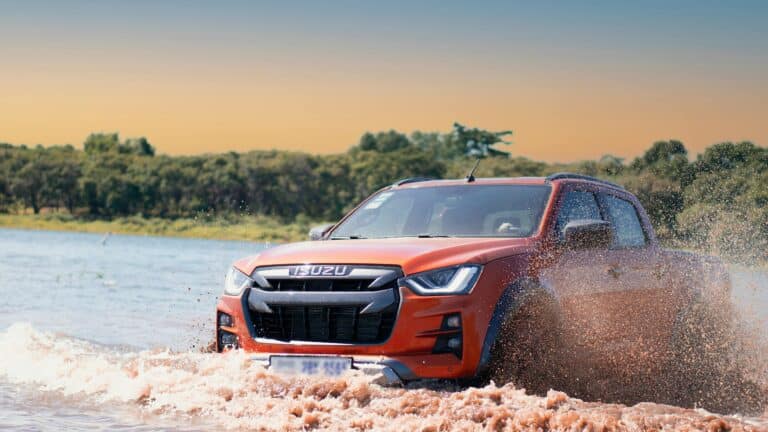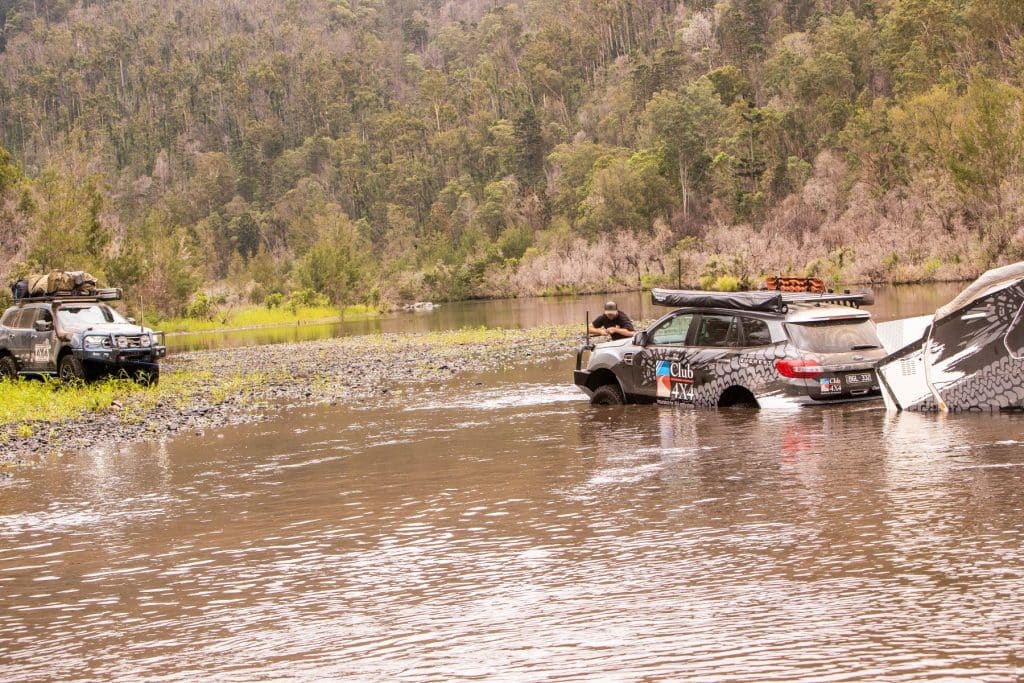How to take your little house for a swim: towing through water




Dave Darmody, owner and lead trainer of Australian Offroad Academy offers some great tips on towing your off-road caravan or camper trailer through a water crossing.
Sometimes, the really cool campsite, fishing spot or bakery is on the opposite side of the creek, stream or river. Sometimes you’ll be looking at getting across there with your van in tow.
Before we begin talking about towing your RV through the water and what to think about to help ensure success, let’s make something painfully clear. This is not about driving into floodwater. I like to think of it like this. There is no safe way to cross water that is not where water is meant to be. End of story. So, as we delve into the following tips which will lead to a successful crossing with dry bedding, we shall go in on the understanding that you’re in a 4WD with a trailer, not on a boat!
There’s quite a bit at stake here. Bumping into a tree during a low-range crawl into a secret campsite is a pretty bad start to your trip. But flooding your van and maybe your 4WD, and having all of your gear beyond saturated and possibly destroyed is devastating.
So, if there’s another, safer, better way to get to where you are going that doesn’t involve towing through water…let’s go that way.

If you’re still reading this then I assume that we are still planning to get things wet.
Well then, park up somewhere safe and out of the way, put something on your feet and grab a walking stick of some form. Let’s go for a walk.
Obviously, we are checking the depth by walking the crossing. But we are also doing much, much more. Our walk across will be giving us an indication of the flow rate and we’ll be searching the crossing for any unseen obstructions (rocks, holes, crocodiles). We’ll also be getting to terms with what the surface is like under the water and on the opposite bank. Is it sandy or rocky? Big rocky? Or little rocky? Is the exit slippery?
Now that you know so much more it’s time to make an evaluation of your chances of success. There is no safe way to cross rapidly flowing water. Don’t buy into any suggestions like ‘drive upstream, then turn downstream’. We’ve all seen enough YouTube to see how that can end.
The flow rate is either safe or it’s not. As a convenient measure, I like to suggest that if you feel yourself being pushed downstream whilst walking, then your car (being six metres wide and full of air), is quite likely to get scooped up. So, if you can’t keep a straight line walking, then you’re not driving it.

Now that you know all about the crossing, how well do you know your gear? What is your safe fording depth? Where is your air intake? Are your tyre pressures set correctly for a sandy river bed?
Beyond a certain depth for your vehicle, it’s an excellent idea to employ the use of a blind or ‘car bra’. This will help you to create a bow wave and therefore a ‘hole in the water’ to drive in. However, no amount of bow wave will make up for a low or poorly oriented air intake.
Does your trailer need to have vents taped up? How about doors? Your caravan creator is unlikely to have planned for you to take your home on wheels underwater. 10 minutes spent with a roll of duct tape may save you a lot of time and stress later.
Low range, obviously. But also consider sending one of your mates across first, then have recovery gear at the ready. There’s really no reason why you couldn’t enter the crossing with an equaliser strap and kinetic rope already hooked up and either tucked behind the bullbar or passed through the passenger window. Hopefully, it won’t be needed but if it is, that will save a lot of valuable time.
Wind your windows down. If you need an exit then it’s far better to climb out through the window than to open the door. And if you need that exit because you’ve really made an error with the depth and your electric windows aren’t working, then you’ll be glad that you planned ahead.
Seatbelts on! The logic behind having to ‘get out quick’ is irrelevant if you’ve been knocked unconscious when you’ve smashed your head against the b pillar due to your own poor planning and not wearing a seatbelt.

Enter the crossing slowly. You actually don’t want to float, you want to ‘drive with purpose’. If you plunge in quickly, sure it’ll look dramatic, but you’ll also make the water effectively much deeper and you’ll likely induce wheel spin when the resistance of the water sets in. If it’s a loose bottom, your spinning wheels will see you bogged… in the river.
Enter slowly and gradually increase torque to match the resistance of the water and to maintain your bow wave.
Be aware that even a slight current has the capacity to have an undesired (but expected) effect on your trailer. Big, rectangular box with a big slab side, full of air… there’s a recipe for a gentle current to start to act on your trailer, pushing it sideways. Be mindful of this possibility in all stages of your preparation and execution.

Our clever 4WDs are designed to take us to interesting and remote locations but they are not capable of defying or rewriting the principles of buoyancy and fluid dynamics. You’re making a lot of assumptions when planning to cross water and those assumptions include their own assumptions when you add a trailer to the mix.
Consider your options, consider the elements and conditions. Then make the choice that lets you sleep well in dry bedding that night.